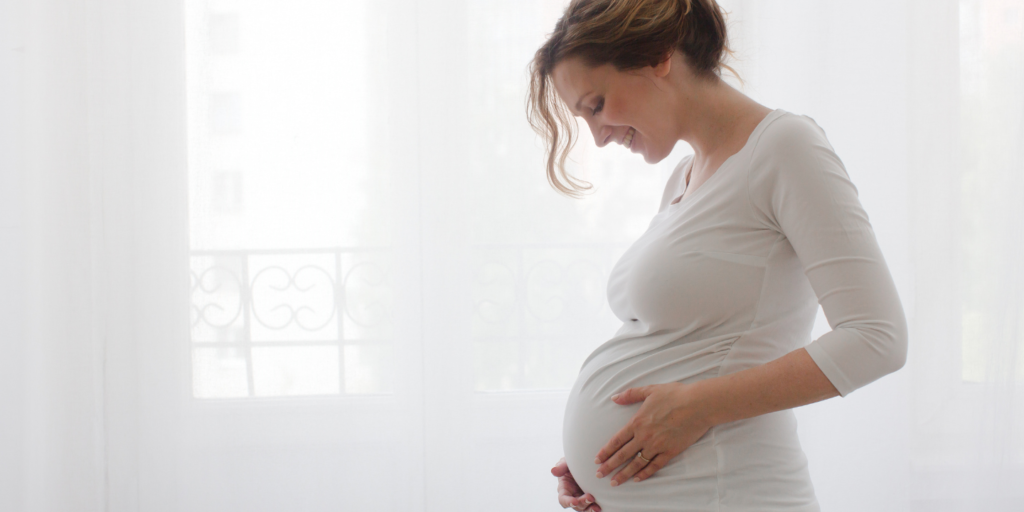LOOKING BEYOND YOUR BUMP
Hannah Christie B. Sci (Ex Sci), B. Sci (Ex Sci)(Hons)
Accredited Exercise Scientist and PhD Candidate Hannah Christie explains how reaching physical activity guidelines during pregnancy and in the postpartum can be made easier! Hannah has a special interest and two dissertations in exercise during pregnancy and the postpartum period. She has also published several international journals and helped with writing clinical guidelines for many complications seen during pregnancy.
Physical activity during pregnancy and into the postpartum period is important for reducing the risk of maternal and delivery complications and thus, reducing the risk of chronic conditions during the postpartum [1][2]. Examples of these complications can include: gestational diabetes mellitus, gestational hypertension, and preeclampsia [1].
Research has found that only 16% of women during pregnancy [3] and 63% of postpartum women [4] meet the physical activity guidelines – and these numbers are even lower during lockdowns [5, 6]!
What are the guidelines?
Do you know what the pregnancy and postpartum physical activity guidelines are? Did you know they’re the same as the physical activity guidelines for adults who aren’t pregnant (or have just had a baby)? Well, it’s true, the guidelines are:
150 minutes of moderate physical activity a week [7]
That seems like a lot: and it averages to 30 minutes most (if not all) days of the week. If that seems impossible here are some tips on reaching those guidelines in our busy lives:
Try and break up the exercise into small ‘bite’ size bouts
Sometimes it’s hard to find 30 minutes in the day. But a study has found that breaking up physical activity into ‘bite’ size bouts can have the same implications on birth and delivery outcomes as completing the guidelines in one bout (pre-print)
Go for a walk with some friends
Going for a walk with friends who can help you stay motivated is a great way to meet guidelines. This is also a good way to help with mental health and stay social during a time that can be quite isolating
Try taking the stairs and/or walking the kids to school
I know it’s cliché, but it does work. Taking the stairs instead of the elevator or walking the kids to school (or parking further away) can help you improve your physical capacity and meet those guidelines. While this might be more difficult towards the end of your pregnancy and in those early postpartum weeks – aim to keep moving.
But there are some important things to remember!
During pregnancy:
- Always follow advice of your accredited and licensed health care professional. We are trained to help you gain confidence in safely completing physical activity during pregnancy.
- Don’t start any new exercise you haven’t done prior to falling pregnant.
- There are certain exercises that are contraindicated during pregnancy. Chat to your local exercise physiologist about what exercises are and aren’t safe during pregnancy.
During the postpartum:
- Again, follow advice of your healthcare professional
- I recommend seeing your obstetrician or local women’s health physiotherapist for a 6-week clearance for physical activity – you don’t want to do any more damage
- Slowly start moving again – don’t jump straight back into running 5km if you ran before delivery, try doing the popular ‘couch to 5k’ program.
It’s important to listen to your body during your pregnancy and postpartum.
REFERENCES:Davenport MH, Ruchat S-M, Poitras VJ, et al (2018) Prenatal exercise for the prevention of gestational diabetes mellitus and hypertensive disorders of pregnancy: a systematic review and meta-analysis. Br J Sports Med 52(21):1367–1375. https://doi.org/10.1136/bjsports-2018-099355Davenport MH, Giroux I, Sopper MM, Mottola MF (2011) Postpartum Exercise Regardless of Intensity Improves Chronic Disease Risk Factors: Med Sci Sports Exerc 43(6):951–958. https://doi.org/10.1249/MSS.0b013e3182051155Domingues MR, Barros AJD (2007) Leisure-time physical activity during pregnancy in the 2004 Pelotas Birth Cohort Study. Rev Saúde Pública 41(2):173–180. https://doi.org/10.1590/S0034-89102007000200002van der Pligt P, Olander EK, Ball K, et al (2016) Maternal dietary intake and physical activity habits during the postpartum period: associations with clinician advice in a sample of Australian first time mothers. BMC Pregnancy Childbirth 16(1):27. https://doi.org/10.1186/s12884-016-0812-4Christie HE, Beetham K, Stratton E, Francois ME (2022) “Worn-out but happy”: Postpartum Women’s Mental Health and Well-Being During COVID-19 Restrictions in Australia. Front Glob Womens Health 2:110. https://doi.org/10.3389/fgwh.2021.793602Davenport MH, Meyer S, Meah VL, Strynadka MC, Khurana R (2020) Moms Are Not OK: COVID-19 and Maternal Mental Health. Front Glob Womens Health 1. https://doi.org/10.3389/fgwh.2020.00001Brown WJ, Hayman M, Haakstad LAH, et al (2022) Australian guidelines for physical activity in pregnancy and postpartum. J Sci Med Sport 25(6):511–519. https://doi.org/10.1016/j.jsams.2022.03.008











